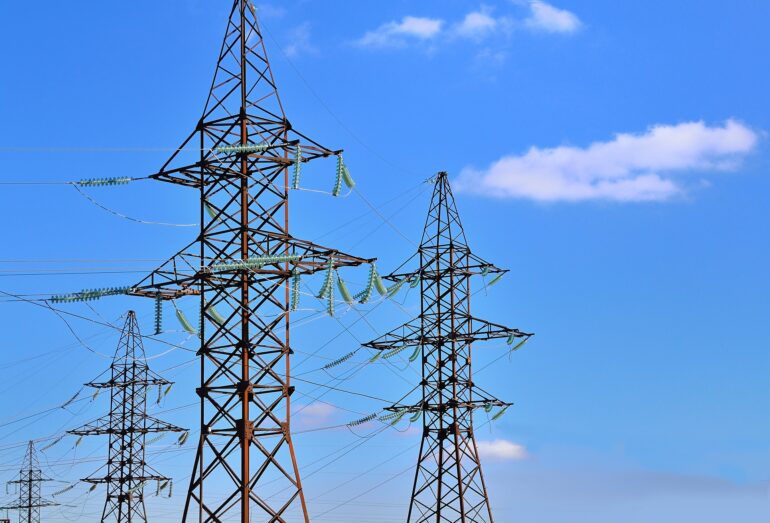TL;DR:
- AI-driven technology is causing a significant surge in electricity demand, with data centers leading the way.
- The Biden administration’s push for electric vehicle and semiconductor factories is further straining the already stressed U.S. electricity grid.
- US electricity demand is increasing at an unprecedented rate, with forecasts indicating a 1.5% annual growth, the highest in decades.
- Power companies are reevaluating the decommissioning of fossil fuel-burning plants, potentially leading to short-term increases in emissions.
- Insufficient investment in long-distance transmission lines poses a looming threat of rolling blackouts.
- Virginia’s data center hub experienced a surge in facilities due to the pandemic, causing a halt in new connections and potential supply constraints until 2026.
Main AI News:
In the heart of northern Virginia, a sprawling 30-square-mile expanse known as “data center alley” has witnessed a remarkable surge in artificial intelligence (AI) applications, which have set the region’s power consumption into overdrive. Struggling to keep pace with this relentless demand, the local power utility found itself temporarily halting new data center connections in 2022. Even more intriguing, Virginia’s environmental regulators toyed with the notion of permitting data centers to rely on diesel generators during power shortages, but this proposal faced staunch community opposition and was ultimately shelved.
Across the plains of Kansas City, a data center, coupled with an electric vehicle battery factory under construction, is poised to consume such an immense amount of energy that the local utility provider has postponed its plans to shutter a coal-fired power plant. This situation mirrors a nationwide predicament in the United States, where electric utilities and regulatory bodies have been blindsided by the most substantial surge in energy demand in recent memory. Among the many unanticipated challenges, one standout culprit is AI—an exceptionally power-hungry technology that harnesses specialized microchips to process colossal volumes of data.
According to Boston Consulting Group, electricity consumption in U.S. data centers alone is poised to triple from 2022 levels, potentially reaching a staggering 390 terawatt hours by the decade’s end. To put this into perspective, that’s roughly equivalent to 7.5% of the nation’s projected electricity demand. Sam Altman, the CEO of OpenAI, the organization behind the global phenomenon known as ChatGPT, emphasized the gravity of the situation at the World Economic Forum in Davos, Switzerland: “We do need way more energy in the world than we thought we needed before. We still don’t appreciate the energy needs of this technology.“
For decades, US electricity demand exhibited an annual growth rate of less than 1%. However, recent forecasts reveal that utilities and grid operators have now doubled their projections for the next five years to around 1.5%, marking the highest increase since the 1990s—well before the United States intensified efforts to enhance energy efficiency in homes and businesses.
The surge in data centers isn’t the sole catalyst pushing power companies to revise their energy projections. The Biden administration’s ambitious plans to establish new factories for electric vehicles, batteries, and semiconductors are placing even greater strain on the nation’s already stressed electricity grid. The grid, often referred to as the “biggest machine in the world,” comprises a patchwork of regional networks with insufficient transmission lines in critical areas, making the task of integrating power from wind and solar farms all the more complex.
In response to this unprecedented surge in demand, some power companies are reconsidering plans to decommission fossil fuel-burning plants, and a handful have sought regulatory approvals to construct new gas-powered facilities. Paradoxically, President Joe Biden’s efforts to bolster environmentally friendly industries may temporarily contribute to an uptick in emissions.
Unless utilities accelerate their generation capacity and facilitate connections for independent wind and solar farms to their transmission lines, the situation could deteriorate drastically, warns Ari Peskoe, director of the Electricity Law Initiative at Harvard Law School. “New loads are delayed, factories can’t come online, our economic growth potential is diminished,” he cautions. “The worst-case scenario is utilities don’t adapt and keep old fossil-fuel capacity online, and they don’t evolve past that.”
Rob Gramlich, founder of Grid Strategies, underscores the urgency of infrastructure improvements. He suggests that based on his firm’s projections for peak summer usage, the US may soon confront a future plagued by rolling blackouts if necessary improvements continue to be delayed. “That’s the ultimate concern everybody has: that we’ll be short on power,” he laments. Currently, there is a dire need for an annual investment of at least $20 billion in new long-distance transmission lines, yet this critical infrastructure remains severely underfunded.
In the world’s largest data center hub in Loudoun County, Virginia, approximately 80 facilities have sprouted since 2019. The pandemic’s acceleration of online activities, including shopping, remote work, virtual doctor visits, and more, spurred this electric demand. Dominion Energy Inc. found itself compelled to halt connections to new data centers for nearly three months in 2022 due to overwhelming demand. In that same year, during an earnings call, the head of data center company Digital Realty disclosed Dominion’s cautionary message to its major customers about a potential “pinch point” that could impede the supply of new projects until 2026.
Conclusion:
The rapid growth in AI-related electricity demand and the strain on the US power grid, coupled with challenges related to fossil fuel usage and inadequate infrastructure investment, present a complex landscape for energy markets. Market players must adapt to these evolving demands and invest in sustainable, resilient solutions to ensure long-term energy stability.

